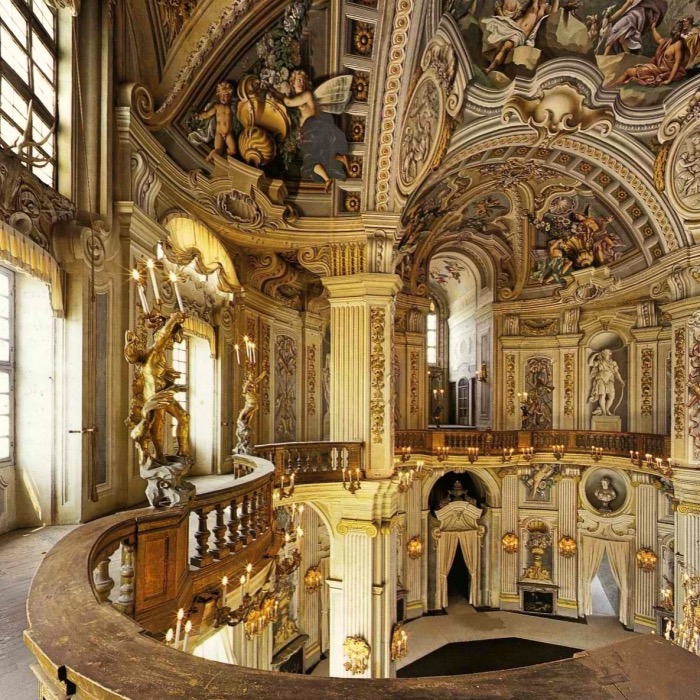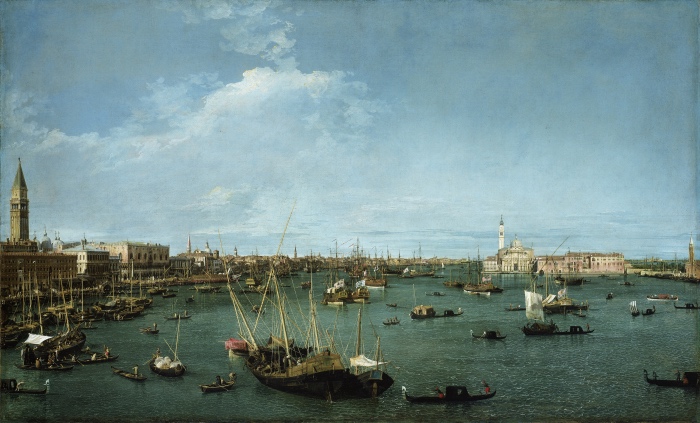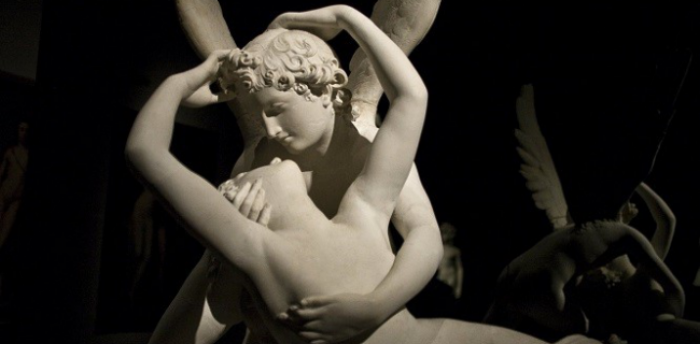
Palazzina di Caccia of Stupinigi
ART OF THE 18TH CENTURY: ARTISTS, WORKS AND THE CLASSICAL IDEAL
The Art of the 18th century is characterized by the transition from Baroque and Rococo to Neoclassicism.
It’s the century of revolutions, from American to French to industrial ones, but is also the century of Enlightenment and great archaeological discoveries.
So, in a climate of great changes, the art of the 18th century developed new ideas and great masterpieces were created.
Art of the 18th century

Jacques-Louis David, The Death of Marat (1793)
In the early 18th century a Baroque taste still prevailed, which privileged the scenographic aspect and the desire to amaze the spectator.
That trend went on for a long time, by copying itself, developing in that movement called Rococo, but at the same time a style which drew inspiration from Greek and Latin art emerged in the mid-18th century: Neoclassicism.
THE REVIVAL OF ANCIENT ART AND THE ART OF THE 18TH CENTURY
In the 18th century aroused a passion for ancient art and Renaissance which drew inspiration from classical artworks.
The new archaeological discoveries excited scholars and artists.
In fact, the amazing discovery of Pompeii and Herculaneum dates back to the first half of the 18th century, where unique examples of Roman painting and pieces of history buried and forgot for centuries emerged.
Those findings have improved the research and the rediscovery of ancient art, by developing publications and works to investigate and study the classical civilization, which became a model, an aesthetic, political and moral reference point.

Canaletto (Canal, Giovanni Antonio 1697-1768): St. Mark’s Basin, Venice. Boston, Museum of Fine Arts
ARTISTS AND ART OF THE 18TH CENTURY
Filippo Juvarra is the architect who mixeS Baroque with Classical elements. Active in the Piedmont region for the Savoy family, draws inspiration from Michelangelo and Borromini.
The Basilica of Superga and the Palazzina di Caccia of Stupinigi (the hunting residence of Stupinigi) are his masterpieces.
Luigi Vanvitelli, at the service of the sovereign of the Kingdom of Naples, designed the Palace of Caserta drawing inspiration from the Palace of Versailles but by preserving classical tradition thanks to the geometrical proportions of this spectacular residence.
Canaletto is the main proponent of Vedutismo, a new pictorial genre depicting urban views, where the landscape is the protagonist of the painting.
Jacques-Louis David preserves the beauty of classical art and its ideals, such as that of the man who fights for his homeland and is ready to risk his own life, like Greek and Latin heroes.
In the painting “The Death of Marat” the artist depicts the death of the revolutionary Jacobin, betrayed and murdered, as a martyr of the French revolution.
Ingres preserved the perfection of the forms of the classical art and draws inspiration from Raphael’s paintings. In The Turkish Bath the bodies are shaped like sculptures.
Antonio Canova is the most important sculptor active between the 18th and the 19th centuries. In his works he preserved the ideal of beauty which derives from the observation of the artworks of the Greek and Latin antiquity.
He carved sculptures portraying mythological subjects, such as Psyche revived by Cupid’s kiss, and also portraits of his contemporaries such as Napoleon and Pauline Bonaparte, without renouncing the model of ancient art.

Antonio Canova, Psyche revived by Cupid’s kiss
BOOKS RECOMMENDED TO KNOW THE ART OF THE 18TH CENTURY
- Neoclassicism – In the arts, Neoclassicism is a historical tradition or aesthetic attitude based on the art of Greece and Rome in antiquity. The movement started around the 18th-century, age of Enlightenment, and continued into the early 19th-century The general credo associated with the aesthetic attitude of Classicism was that art had to be rational and therefore morally better.
-
Jacques-Louis David: 75 + Neoclassical Paintings – Neoclassicism – contains 75+ professionally color corrected reproductions of Religious, Portrait, Mythical and Genre Scenes with title,date and interesting facts page below.


un sito molto sintetico e approfondito x una conoscenza dell’arte
Mi sta dando una mano! Sintetico ma approfondito
ve la consiglio.
OTTIMA
siete stati fantastici a reaixzare quseto tipo di lavoro bravi
Questo sito è molto utile. Ve lo consiglio altamente!
Grazie!